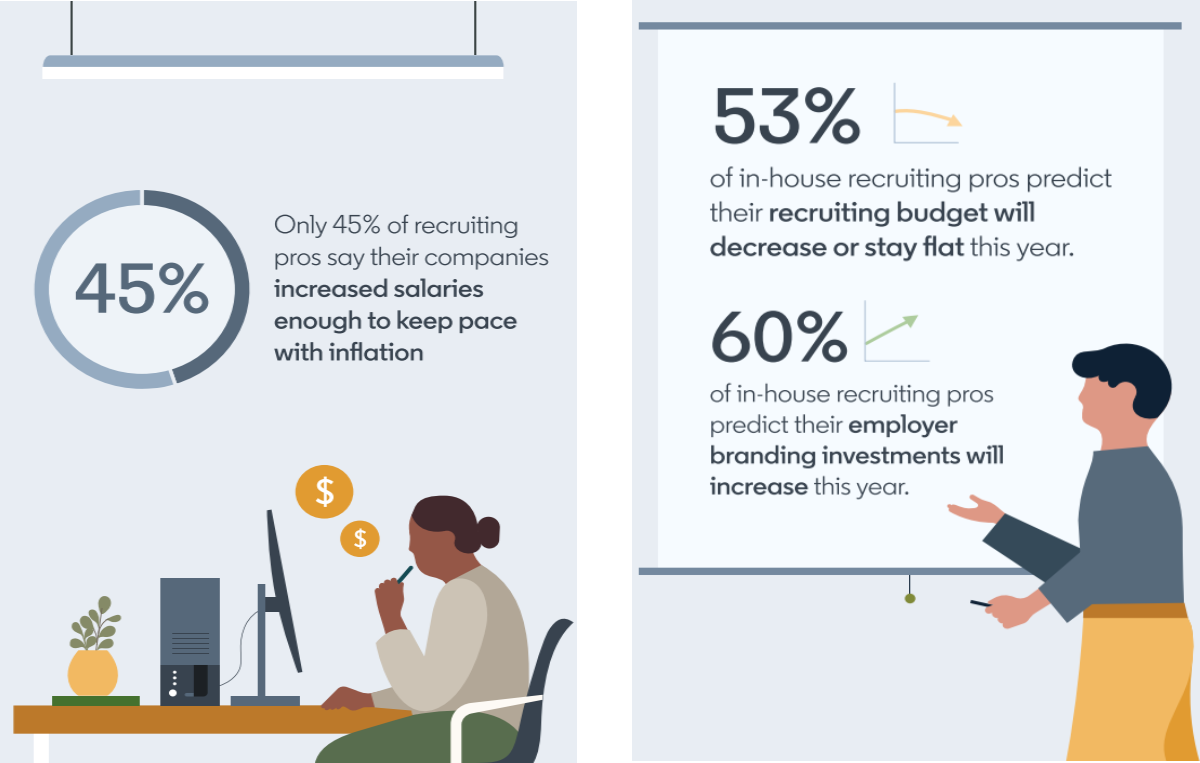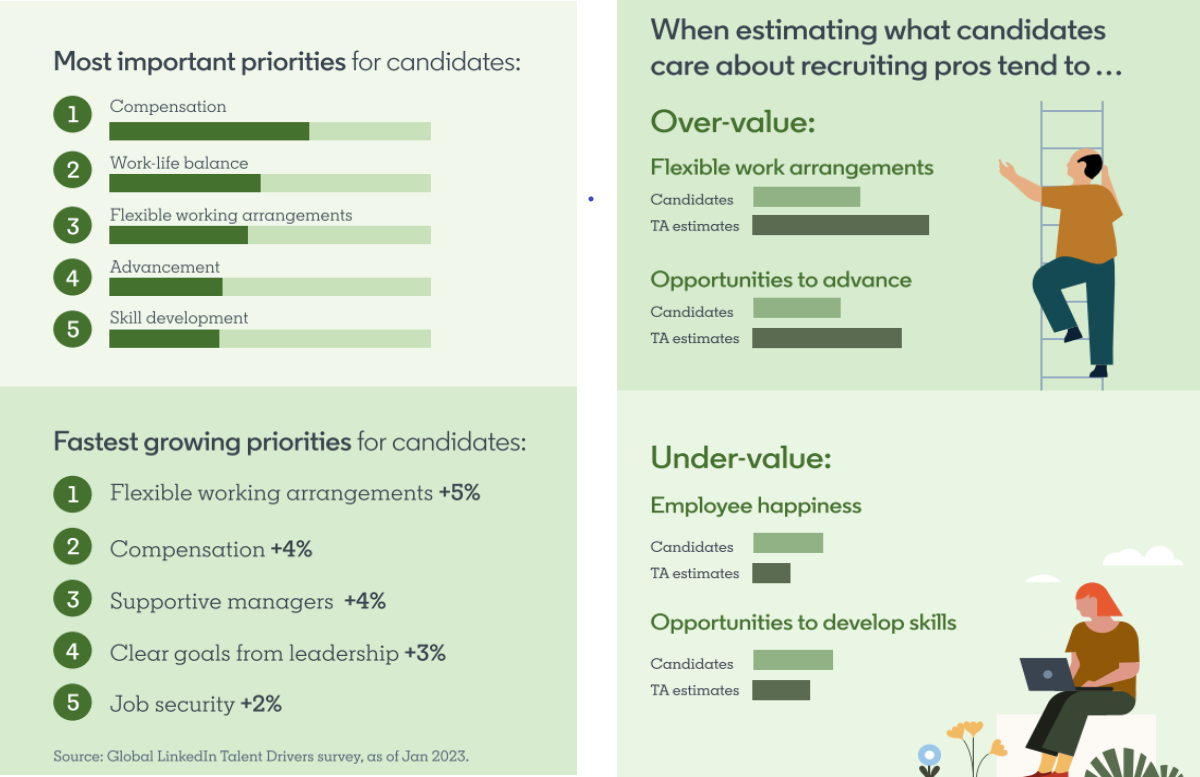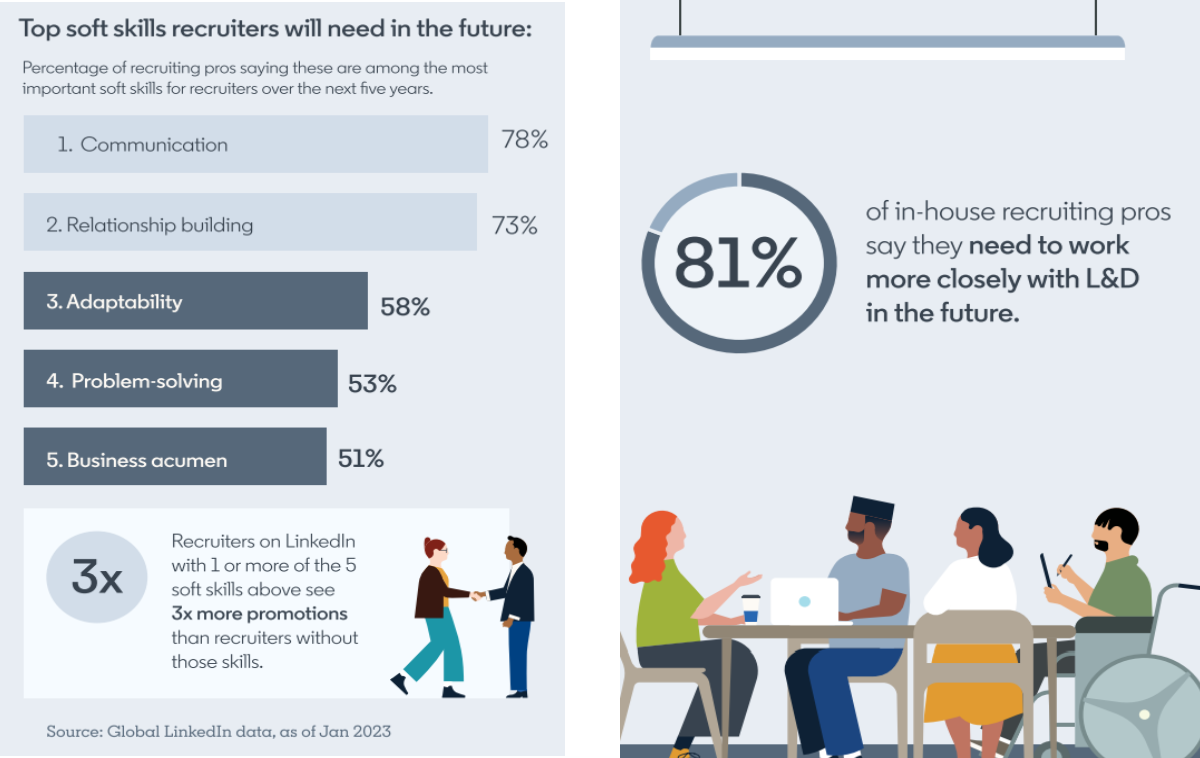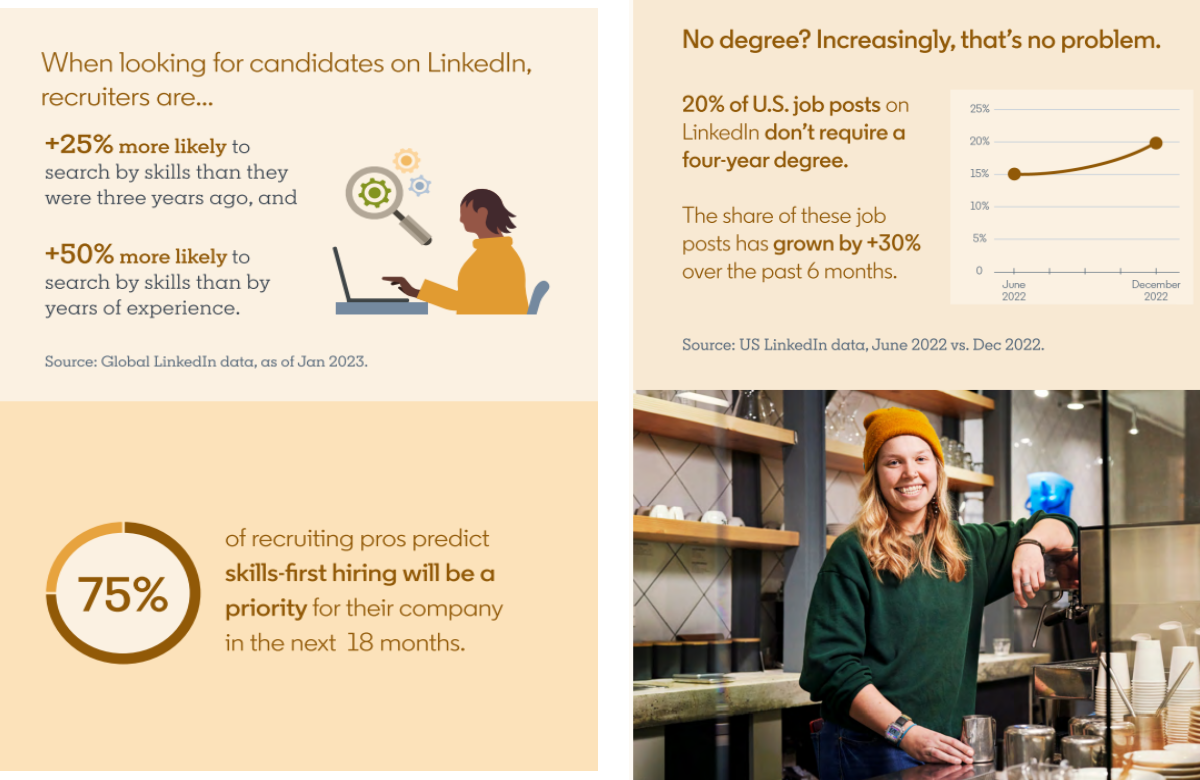It’s tough to predict the future, even with a crystal ball.
But data gleaned from surveys of more than 1,600 recruiting professionals and 20,000 LinkedIn members sheds light on where the talent acquisition industry may be heading this year, according to the Future of Recruiting 2023 report released today by LinkedIn.
For starters, economic uncertainty and major changes in the way we work are creating a challenging climate for TA leaders. This is forcing industry players to become more strategic, adaptable and closely attuned to candidates.
“Recruiting professionals have never been able to make a bigger impact than right now,” Brett Baumoel, vice president of global TA for engineering at Microsoft, says in the report. “You used to be able to say, ‘These hires helped our company.’ Now you can say, ‘I changed the makeup of our company, I changed where we work, I changed what we look for and I changed how we hire.’ “
Indeed. According to the survey, 87% of recruiting professionals say TA has become more strategic over the past year and 70% note their teams have a seat at the proverbial C-suite table. This influence ranges from talking to CFOs about compensation strategy, especially in light of the growing spread of pay transparency laws, to working with chief learning officers on skill gaps within the workforce.
“In the past few years, we’ve seen work change drastically with shifts in the macroeconomic climate and the pandemic, which reshaped how and where we work,” says Jennifer Shappley, vice president of Global Talent Acquisition at LinkedIn. “Talent acquisition leaders have been at the forefront of all these changes helping guide and influence the C-suite on their talent strategies like never before.”
Related: Internal mobility, talent marketplaces are ‘life-or-death’ survival strategies
Money, money, money
While the economic outlook may be cloudy in the medium term, recruiting professionals appear more optimistic about the long-term prospects for candidates, Shappley said.
Increases in candidate salaries and recruiting budgets are among the top topics catching the attention of job seekers and TA leaders, according to the survey.
Compensation ranks as the top priority with job candidates across the globe, but more than half of companies are not keeping up with inflation. That puts recruiters in a tough spot as 64% of survey participants expect the hiring landscape to favor job seekers in the next five years, making a tight job market even tighter.
To offset the competition, TA professionals anticipate employers will invest more money into branding to attract candidates, although their budgets are expected to shrink or become stagnant.
Companies need to stay focused on building talent pipelines, even if their hiring is slowed for the moment. That may be why many companies are taking this opportunity to refine or reinvent their employer brand, with 60% of in-house recruiting professionals predicting their employer branding investments will increase this year, Shappley says.
TA professionals have the clearest view of candidate priorities, labor market dynamics and real-time recruiting performance at their company, Shappley says. She adds they are in the best position, along with their compensation partners, to lead the conversation about pay and its business impact—from championing compensation models that favor skills over pedigree, to ensuring that salaries remain competitive with the external market.
 Source: LinkedIn’s Future of Recruiting 2023
Source: LinkedIn’s Future of Recruiting 2023
Connecting the disconnect on what candidates want
Rather than investing in building an employer’s brand, TA professionals may have better luck landing candidates by focusing on candidates’ workplace priorities.
For example, there appears to be a disconnect between what job candidates want when selecting an employer and what TA professionals think they want.
 Source: LinkedIn’s Future of Recruiting 2023
Source: LinkedIn’s Future of Recruiting 2023
As for the most important and fastest-growing priorities for job seekers, compensation and flexible working arrangements are both among the top three.
“Good pay, balance and flexibility—they’re essential, and we absolutely provide that. But honestly, it’s not what makes us stand out,” Michaela Schutt, head of global talent acquisition at Siemens, says in the report. “In today’s job market, offering those benefits is expected. In our employer branding, we prefer to emphasize what makes us unique.”
Skills trends for TAs
Over the next five years, communication and relationship building are expected to be among the top two soft skills recruiters will need to possess, according to the survey.
That makes sense, given TA professionals will increasingly be working with learning and development teams to upskill existing employees for open positions.
Currently, three out of five TA professionals say they are working closely with L&D teams, and 56% of L&D professionals note that they are working with TA teams.
As TA leaders find their scope of work expanding to include internal mobility, skills-first hiring and employee retention, they will increasingly need to cooperate and collaborate with L&D teams.
“Today, 81% of in-house recruiting pros say they need to work more closely with L&D in the future. This is a massive leap from a year ago when only 45% of L&D pros told us that their teams are working more closely with TA teams,” Shappley says. “This shows that more and more HR teams and organizations are realizing the power of their partnership. As recruiting leaders’ portfolios expand to include things like internal mobility, skills-first hiring and employee retention, they’ll need to partner more closely with L&D to prepare internal talent for new roles, identify skill gaps and ensure their organization is a place people can grow their careers.”
 Source: LinkedIn’s Future of Recruiting 2023
Source: LinkedIn’s Future of Recruiting 2023
TA leaders target upskilling and internal mobility
With concerns about the looming recession weighing on the minds of TA leaders, more companies are seeking to fill open roles with existing employees.
In fact, 75% of TA leaders say internal recruiting will be a major factor in the next five years of recruiting.
To find the right employees for internal hiring, more employers are expected to turn to skills mapping, which aims to make it easier for TAs to match qualified workers with open roles. And at the same time, employees will have an easier time finding jobs at their employer that match their capabilities.
This internal mobility will also help with retention. Companies with high internal mobility have a median employee tenure of 4.9 years versus 3.1 years for companies with low internal mobility, the report states.
 Source: LinkedIn’s Future of Recruiting 2023
Source: LinkedIn’s Future of Recruiting 2023
In addition to mapping employees’ skills, 81% of recruiters say upskilling and reskilling will be key components of reshaping the future of recruiting over the next five years. However, nearly 40% of TA pros feel they can’t accurately assess a candidate’s skills today.
“It’s a hard problem to solve and we’re just in the beginning stages of a multi-year journey to get there,” Shappley says. “For talent professionals who want to get started now, I recommend focusing on three things: Write job descriptions to include skills and not unnecessary qualifiers like a four-year degree, ask about a candidate’s skills during the interview process, and help make sure the entire hiring team has a skills-first focus when hiring.”
Related: Learn more about the latest recruiting trends for TA leaders at the HR Technology Conference, taking place Oct. 10-13 in Las Vegas. Check out the 10 learning tracks and register here.
The post As talent acquisition gets more strategic, what recruiters need to focus on appeared first on HR Executive.